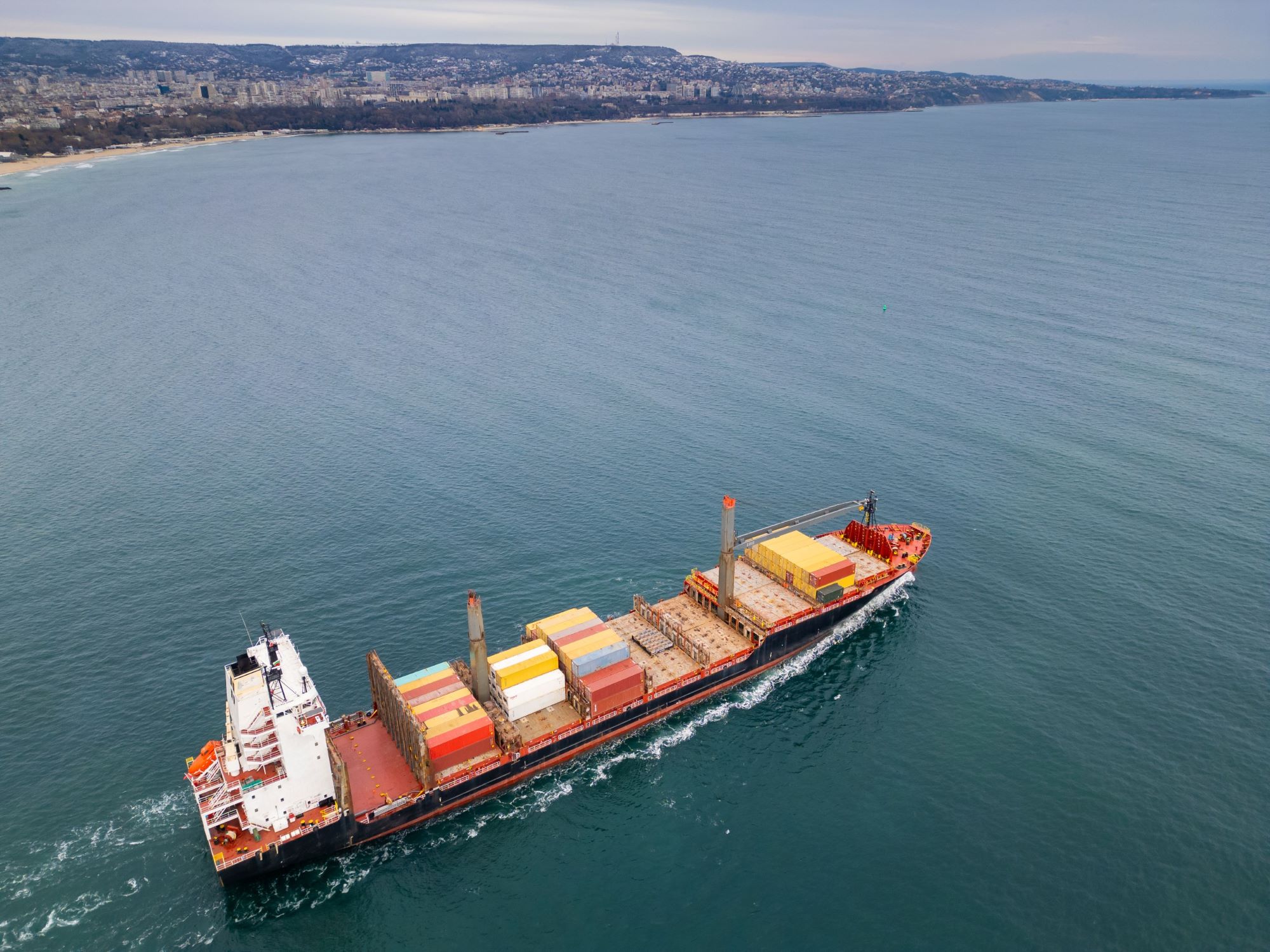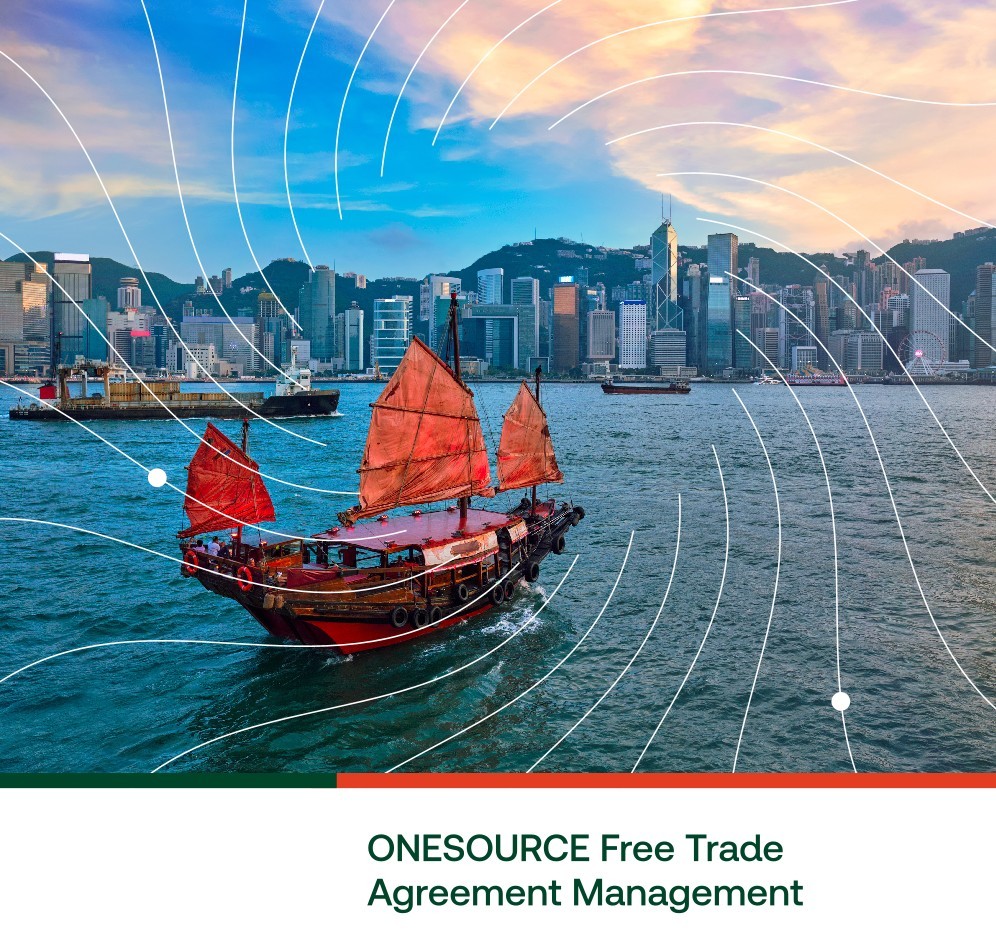Answering FAQs about how to best use free trade agreements.
Highlights
- U.S. tariff hikes and geopolitical conflict are driving a global shift in supply chain management for 2026.
- Free trade agreements (FTAs) help companies lower costs, diversify sourcing, and build resilient, compliant supply chains.
- Most businesses lack FTA automation, missing out on savings. Complex rules and documentation remain the key barriers.
The landscape of international commerce has fundamentally shifted in 2025, as sweeping U.S. tariff increases upended global trade. U.S. consumers now face an overall average effective tariff rate of 18.0%, the highest since 1934. Against this backdrop of economic uncertainty — compounded by ongoing conflicts in Ukraine and the Middle East that threaten established trade routes — free trade agreements (FTAs) have emerged as a critical strategic tool for supply chain resilience.
FTAs can help mitigate tariff exposure, diversify sourcing strategies, and maintain competitive advantage in an era where supply chain disruption is no longer a sporadic event but a structural challenge. Trade policy volatility, climate risk, regulatory pressure, and labor shortages cannot be managed through short-term fixes.
However, according to the 2025 Thomson Reuters Institute Corporate Tariffs Survey, only 33% of businesses are using technology solutions to automate their compliance with free trade agreements that exempt tariffs. That means most companies use manual processes to manage their compliance, potentially missing out on cost savings.
Jump to ↓
What are free trade agreements?
What is the difference between free trade agreements and preferential trade agreements?
How global developments in FTAs are influencing supply chain design
What are the benefits of a free trade agreement for global supply chains?
What are the barriers to using a free trade agreement?
How to successfully manage FTAs
What are free trade agreements?
Free trade agreements are international treaties that determine the tariffs and duties countries impose on imports and exports with the goal of reducing or eliminating trade barriers, thereby making it easier and more cost-effective for businesses to trade across borders. There are two types: bilateral agreements between two countries, and multilateral agreements among three or more countries.
At their core, FTAs work by having participating countries agree to reduce or eliminate import tariffs, duties, and other trade barriers between one another, creating preferential treatment for member nations while each country maintains independent tariff schedules for non-members.
Modern FTAs extend far beyond simple tariff reductions. They typically center on preferential tariff treatment but also include clauses on trade facilitation and rule-making in areas such as investment, intellectual property, government procurement, technical standards and sanitary issues.
For supply chain professionals, the practical benefit is straightforward: when importing goods from an FTA partner country, companies can access lower landed costs and reduced trade barriers — but only if they can demonstrate that products meet specific rules of origin requirements through proper documentation. While older trade deals are “shallower” covering fewer areas like tariffs and quotas, more recently concluded agreements address services, e-commerce and data localization, making them increasingly relevant to complex, multi-tier supply chains navigating today’s interconnected global economy.
What is the difference between free trade agreements and preferential trade agreements?
While the terms are sometimes used interchangeably, the fundamental difference between a free trade agreement and a preferential trade agreement is that a preferential trade agreement can be unilateral — meaning they are relaxations on trade restrictions from one country towards another, without the other country necessarily reciprocating.
Free trade agreements are reciprocal agreements, which are allowed by Article XXIV of the GATT, while preferential trade agreements are typically extended by developed countries towards developing countries as a form of diplomatic patronage and typically need waivers granted by the World Trade Organization, at least for member states. In terms of scope, FTAs are more comprehensive and go beyond preferential treatment, aiming to eliminate or substantially reduce barriers to trade between participating countries, whereas PTAs may still allow for some level of trade protection.
Additionally, PTAs do not eliminate all tariffs but reduce them on certain goods, while FTAs typically seek more comprehensive tariff elimination across a broader range of products. For supply chain professionals, this distinction matters: FTAs generally offer deeper, mutual benefits and more predictable trade conditions, while PTAs provide targeted tariff reductions that may be subject to change based on the granting country’s policy decisions.

Related blog
Mastering tariff series Part 1: Minimizing the impact of tariffs using ONESOURCE Free Trade Agreements (FTAs)
Read blog ↗How global developments in FTAs are influencing supply chain design
Multinational corporations not maximizing their utilization of FTAs are missing out on the benefits FTAs offer.
Bigger and bolder Asian FTAs
Even though the U.S. has taken an increasingly protectionist stance and has withdrawn its participation in international FTAs, notably the Trans-Pacific Partnership (TPP), there have nevertheless been significant global trends and developments in free trade agreements that could influence a company’s supply chain design. After the U.S. left TPP, the remaining signatories agreed to revive the agreement to form the Comprehensive and Progressive Agreement for Trans-Pacific Partnership (CPTPP). Members include Australia, Brunei Darussalam, Canada, Chile, Japan, Malaysia, Mexico, Peru, New Zealand, Singapore, and Vietnam.
The Regional Comprehensive Economic Partnership (RCEP) is the FTA between the ten Association of Southeast Asian Nations (ASEAN) member states and their five FTA partners China, Japan, the Republic of Korea, Australia, and New Zealand. This makes it the world’s biggest free trade deal and most significant trading bloc. As many businesses have part of their supply chain network in countries in this region there are opportunities that can be realized.
Reduced dependency on China
The U.S.-China trade war and the vulnerabilities exposed by the U.S. reliance on Chinese supply chains, has led the U.S. to decrease its dependence on China for the production of critical inputs for its global supply chains in a post-pandemic world. The United States-Mexico-Canada Agreement (USMCA) addresses this by providing incentives to move manufacturing to North America.
The USMCA, which replaced the North America Free Trade Agreement (NAFTA), is a viable alternative as a regional integrated supply chain. For U.S. companies in sectors such as automotive, electronics, medical devices, chemicals, agriculture, and textiles, the USMCA provides cost savings from zero or much lower tariffs and expands their export markets.
Stronger labor laws
The USMCA is also much stricter than other FTAs regarding labor laws. It requires Mexico to strengthen its labor unions, prohibits imports of goods made by forced labor, and protects workers’ rights, including migrant workers. This supports the social aspect of U.S. corporations’ environmental, social, and governance (ESG) goals.
What are the benefits of a free trade agreement for global supply chains?
With the impact of FTAs on lowering the cost of imports and expanding into international markets, the global supply chain has become a priority at the C-suite level. Supply chain officers and compliance trade professionals now play a crucial and valuable role in corporations.
The benefits of FTAs for global supply chains are compelling:
- Cost savings: This is the most compelling argument for using FTAs. Companies can save a lot from zero percent or otherwise reduced tariffs for qualified goods.
- Sourcing stability: FTAs allow goods and services to flow between countries without restrictions, allowing companies to have greater certainty in sourcing imports.
- Predictable trading environment: With clear, transparent, and standard rules and requirements, FTAs allow companies to plan their sourcing with certainty.
- Wider export markets: Corporations have greater, easier, and more competitive access to international markets where FTAs are available.
- Intellectual property protection: There is more robust protection and enforcement of patents and copyrights in FTA partner countries.
- Access to government contracts: Companies can also bid on certain government procurements in the FTA partner country.
What are the barriers to using a free trade agreement?
Despite the apparent benefits of leveraging FTAs in global supply chains in the current political climate, most corporations are not taking advantage of these agreements. The two most common reasons facing corporations are:
Complex rules and requirements
With approximately 400 free trade agreements, there are multiple FTAs available even to companies that employ only one trade lane. The U.S. has FTAs with 20 countries, each with different rules and requirements. There are varying benefits and costs associated with compliance. FTAs are negotiated instruments written in legal language, so they can be challenging to understand. And the rules of eligibility or duty rates are constantly changing and being updated, which can be challenging to keep track of.
This can be daunting for companies, especially if they are new to global trade. They may not have the resources to understand, interpret, and comply with complex rules of origin or even decide which free trade agreements to use.
Laborious compliance
Obtaining certificates of origin (CO) is one of the biggest pain points for corporations. They must ensure that the imported products meet the required FTA standards as well as collecting the appropriate documentation to claim preference. Requesting a copy of the certificates or declarations for every component or good from suppliers can be tedious and time-consuming. And the rules, processes, and formats vary by free trade agreement.
Analyzing Bills of Materials (BOMs) is also confusing and time-intensive, particularly if companies use multiple, intersecting trade agreements within their supply chain. Many companies use spreadsheets to manage their solicitation responses, supplier information, and certificates. This manual process is slow, inefficient and prone to error.
How to successfully manage FTAs
Successfully managing FTAs at scale requires specialized technology, and ONESOURCE Free Trade Agreement Management is a software solution that enables corporations to identify opportunities to qualify goods under FTA-specific rules of origin and manage compliance with those agreements. The platform’s unique architecture can accommodate any existing, changing, or future free trade agreements, including USMCA, CFTA, SFTA, AFTA, ILFTA, JFTA, UKFTA, CAFTA, and TAFTA.
The built-in FTA Analyzer delivers analytics and up-to-the-day reports highlighting which sourcing countries, trade lanes, and trade agreements offer the greatest return on investment — based on your organization’s actual trade data. Automation is key; Free Trade Agreement Management automates processes such as soliciting suppliers to get the component build and costs, comparing standard duty rates with preferential rates, and filing entries and Certificate of Origin with customs authorities.
As tariffs and agreements evolve, the system is updated within 24 hours, ensuring that every scenario and recommendation reflects the most current regulatory landscape. FTA savings, utilization rates, and other key analytics are easily tracked through user-defined dashboards, while automated alerts and notifications simplify the process of supplier solicitation and certificate management.
For organizations navigating today’s complex trade environment with nearly 400 trade agreements globally, ONESOURCE provides the automation, compliance monitoring, and strategic visibility needed to transform FTA management from a manual, under-utilized process into a competitive advantage.

ONESOURCE Free Trade Agreement Management
Software that identifies opportunities to qualify goods under FTA-specific rules
Learn more ↗






